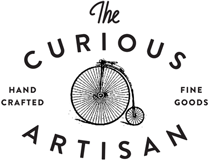I've been meaning to make a short clip on how to make the most of the loose guidelines (1 with slant, 1 without a slant) that's included in a CalligraPad or Padlet by @calligrapads and generally all the guidelines that you have and some of the important tips I got from @drjmvitolo @masterpenman and IAMPETH archives.. Happy to have finally made one. It's gonna be a long post but I'm hoping that it will help..
They are called "guidelines" for very obvious reasons: they are meant to 'guide' you and help you when you practice especially when you want to get serious with pointed pen and delve deeper into the classics.. Lines are very essential for developing consistency and uniformity. You need a ruled sheet to work on and it is a must that you must write within those lines.. Hitting them as you go up and down.. Not leaving a space or writing way pass it.
How to:
- Tear off a sheet of paper from your Pad or Padlet and place them over your guide sheet.. Remember to use cushion underneath. Never write directly on the table.. Use 5-8 pages of your practice sheet or an equivalent thickness of newspaper or a sheet of watercolor paper or leather blotter (if you wanna go fancy). Paper cushion promotes better ink flow (because if he negative pull by the cushion) since it draws the ink out and helps preserve the point of your nib.
- The pads are semi-translucent and it is the very reason why they are unlined.. You can easily see through it.. You just need to place your guidesheet underneath and should you decide to make a calligraphy piece later or write a letter.. you don't need to rule with pencil and erase.
- 3 Consecutive spaces (in the guideline sheet) are to be placed upright for proper use. **the space with a bolder line is just a line break or space break in between sentences. The spaces are generally smaller with (4mm height) so for beginners, one might consider using up 2 spaces (as x-height)
- The bottom line (of that 3 consecutive spaces) is called the BASELINE.. It is where all the letters sit be it small letter (also called "minuscule") or capital letter (also known as "majuscule). The next line above the baseline is called the HEADER LINE..
-
The space between the baseline and header line is called the "X-HEIGHT" (it occupies 1 space).. Generally and basically, all small letters (its main body) occupy 1 space.. capital letters occupy 3 spaces which is the height of the 3 consecutive spaces of places upright (ratio of 1:3).
-
The larger space below the baseline is called the DESCENDER SPACE where all the letters with tails (i.e. 'f, g, j..') would extend.. Like the ascender space (with 1st and 2nd ascender space).. The descender space also occupies 2 spaces, too (1st and 2nd descender space) but as a matter of personal preference.. Took the liberty to make it 1 1/2 since I personally like less lengthy loops.
-
All the letters with upper loops or ascenders (i.e. 'b, f, h..') occupy 3 spaces (including the 1st space which is the x-height, total of 3 spaces) except letters 'd, t'.. they occupy only 2.
-
Wondering what the slant lines are for? It is a guide for the slant of your letters.. It's Copperplate/Engrosser's Script-inspired at 55 degrees as a standard (which we need to have when we're learning something). Having said that, since Copperplate is a shaded type of script (it's where the beauty of the script lies -- the placement of those shades) -- it is a MUST that the shade or most part of shade should always be PARALLEL TO THE SLANT.
-
What are the guidelines without the slants for then? It is for you to go and practice some freedom of slant.. You will find out later on that you might like a more slanted script (like 50-45 degrees slant - like me).. That guide will then come in handy.. Again, a matter of preference.. Important thing is that you keep it uniform.. If you start at a 50degree slant.. Keep it 50 degrees all the way.Intelligent practice wins.. Remember to have fun!
